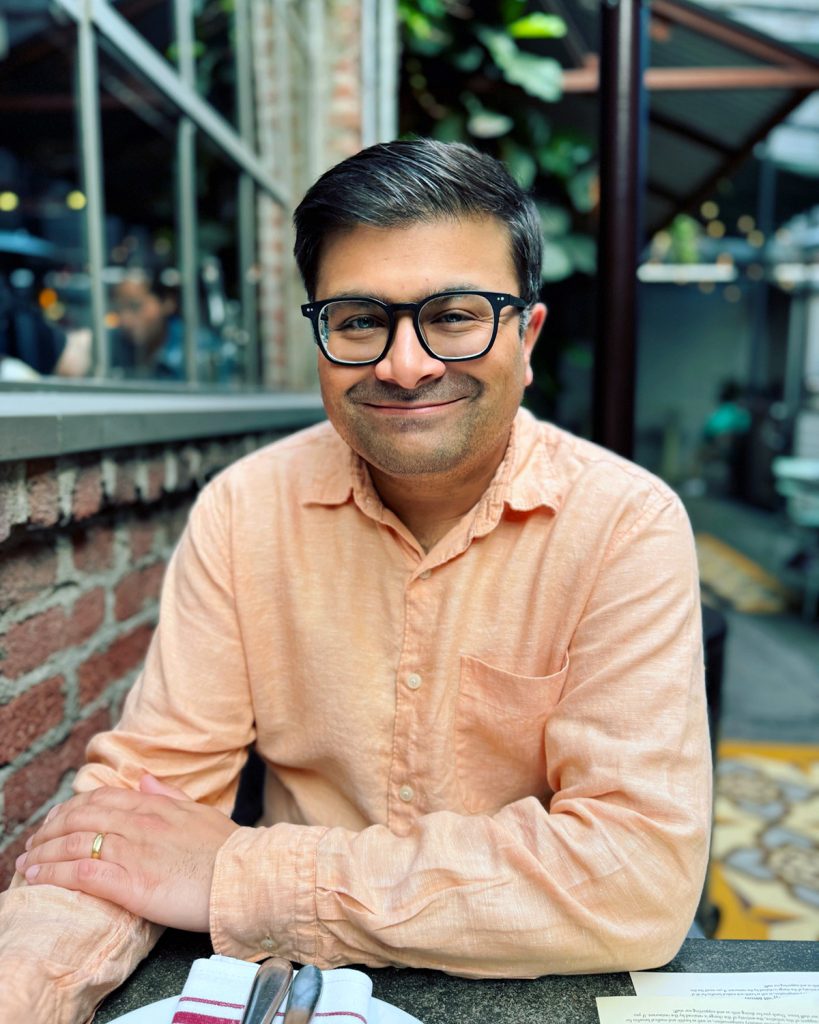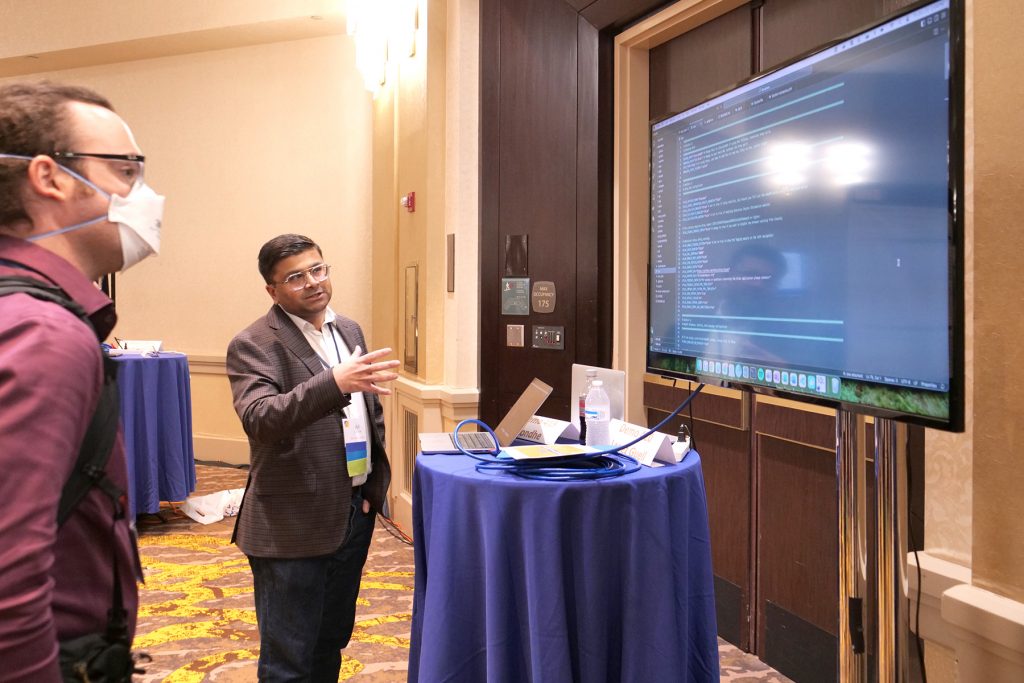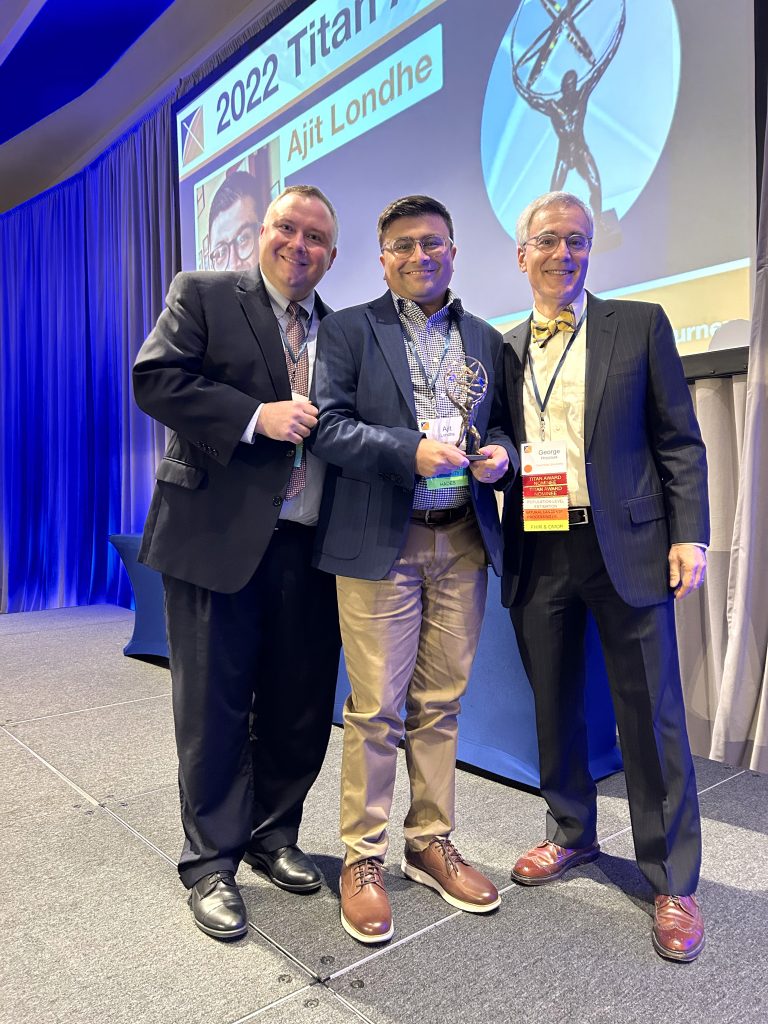- Who We Are
- Updates & News
- Standards
- Software Tools
- Network Studies
- Community Forums
- Education
- New To OHDSI?
- Community Calls
- Past Events
- 2024 Europe Symposium
- 2024 Thailand Tutorial
- 2024 Japan Tutorial
- 2024 DevCon
- 2024 Phenotype Phebruary
- 2023 Global Symposium
- 2023 APAC Symposium
- 2023 Europe Symposium
- 2023 SOS Challenge
- 2023 DevCon
- 2023 Phenotype Phebruary
- 2022 Global Symposium
- 2021 Global Symposium
- 2020 Global Symposium
- ALL Past OHDSI Events
- Workgroups
- 2023 ‘Our Journey’ Annual Report
- This Week In OHDSI
- Support & Sponsorship
- CBER Best Seminars
- 2024 Europe Symposium
- 2024 Global Symposium
- Github
- YouTube
- Newsletters
Collaborator Spotlight: Ajit Londhe
Ajit Londhe is a Senior Director in the RWE Analytics team at Boehringer Ingelheim. He received his Bachelor of Science in Computer Science from Penn State University and his Master’s in Public Health from Emory University.
Ajit contributes to various OHDSI software projects, such as Atlas, HADES, and Broadsea. His OHDSI studies typically involve population level estimation utilizing secondary data sources such as administrative claims and EHRs. Ajit won the 2022 OHDSI Titan Award for Community Collaboration.
In the latest edition of the Collaborator Spotlight, Ajit discusses his career journey, the value of open-source development to OHDSI’s mission, some of the exciting new tools being built in the community, and plenty more.
Can you discuss your background and career journey?
I started at Johnson & Johnson where I rotated through different IT positions. It was when I was

supporting the IT side of Epidemiology that I realized I wanted to make Epidemiology my career focus. I went back to school and received my master’s in public health. This enabled me to transition my career into pharmacoepidemiology.
You have been a leader in open-source development within the community. Can you highlight a couple of the tools you have worked on and how they impact observational research?
I’ve contributed to R packages that are foundational for research by enabling answers to the following questions:
Is the data fit-for-purpose? Does the data have the elements needed for the study?
More specifically: in Achilles, I added support for executing it more efficiently with newer database platforms; in DataQualityDashboard, I participated in the development of the first version which has helped establish the idea of evaluating OMOP CDM data quality empirically.
I’ve also contributed to the web application Atlas and its backend WebAPI. Atlas is often the next most important tool in the study lifecycle, as creating concept sets and cohort definitions are the building blocks of study design. I’ve long been interested in improving the user experience in these tools so that we can reduce design errors and gain efficiency in scalable research. Through a partnership with Amgen and Odysseus, we added features like tagging and reusables that are helpful for larger organizations to adopt standard definitions of study assets.
 How critical is the concept of ‘community-developed open-source technology’ for a global network engaging in shared observational research?
How critical is the concept of ‘community-developed open-source technology’ for a global network engaging in shared observational research?
I’m a strong believer of it. I think the open-source model ensures that we continue to bring the best ideas forward and keep transparency of all methods. There are many methods and ecosystems out there for observational research / RWE. But I think where OHDSI shines is in its reproducibility, interoperability, and innovation. We truly can scale research across many disparate sites around the world with a high degree of confidence.
What are some of the tools either recently shared or in development that have been particularly exciting to you?
Broadsea has been my passion project for the past year. Lee Evans did a great job kicking this off and evangelizing Docker within OHDSI. It took me a while to understand Docker and container technologies, but now that I do (mostly), I think it’s important we embrace this technology more so that we can get OHDSI tools in the hands of more interested sites with far fewer technical headaches. Lee and I have on our roadmap this year to support more OHDSI tools, but in doing so we align with the Technology Advisory Board on a more coordinated release schedule.
I’m also excited about the progress my colleagues Martin Lavallee and Katy Sadowski have made in the development of ClinicalCharacteristics, which aims to simplify the generation of table shell outputs that we so often need. We’ve been using this package at Boehringer Ingelheim for some internal analyses, and it has yielded some significant efficiency gains already.
Strategus could completely revamp how we conduct studies by harmonizing a lot of common analytic steps used in population level estimation and patient level prediction. I am excited about the potential to integrate this with Atlas so that we have a more cohesive R package and web application relationship.
And just recently, the Chimera announcement is intriguing, as it could alleviate a pain point that we all face: creating valid concept sets at scale.
 You were a 2022 Titan Award honoree for community collaboration. How special was that honor, and how meaningful is it to assist others on their journey?
You were a 2022 Titan Award honoree for community collaboration. How special was that honor, and how meaningful is it to assist others on their journey?
It’s amazing to be able to collaborate with so many talented people from different disciplines and organizations, all trying to achieve the same goal of improving the journey for patients globally. So, to win a Titan award focused on community collaboration is a tremendous honor – especially considering it came with that awesome Lego version of me holding a tiny Titan award!
While developing tools, you are also an epidemiologist, so can you discuss your research focuses?
I support the Inflammation therapeutic area of Boehringer Ingelheim. Given the complexity of disease identification and progression in our dermatology and pulmonary indications, it is critical that we examine many data sources from around the world and include those with unique provenance – in particular, going beyond administrative claims to get into less structured data.
My work in this space for Boehringer Ingelheim has largely been conducted using data in OMOP and I’ve been able to leverage OHDSI tools to scale these analyses efficiently. However, we need to continue to innovate on how best to use more complex data at scale, such as those derived from NLP or data featuring disease specific terminologies and coding systems that are not sufficiently handled by the OMOP Standard Vocabularies.
What are some of your hobbies, and what is one interesting thing that most community members might not know about you?
I love to play basketball, run, play video games, listen to podcasts, and watch movies. One thing the community might not know about me is that I’ve seen every James Bond movie at least a dozen times (yes including the “unofficial” one); you definitely want me on your James Bond trivia team.
